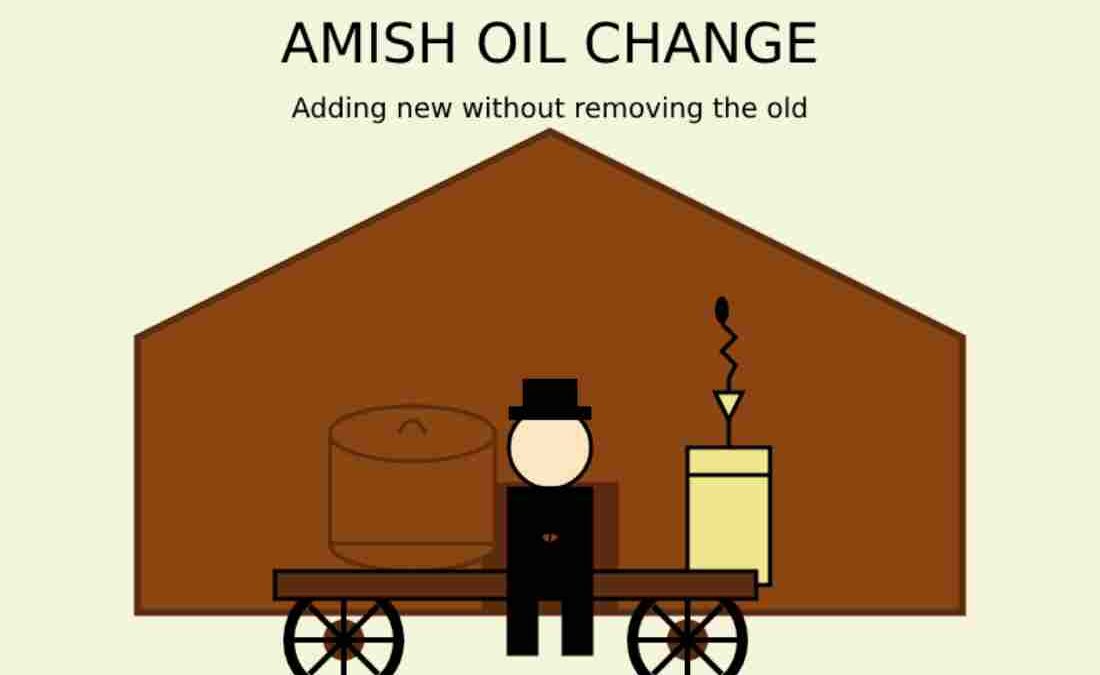Table of Contents
Origins and Definition
An “Amish Oil Change” is a humorous colloquial term that refers to a vehicle maintenance shortcut where someone adds new oil to their engine without draining the old oil first. The term reflects stereotypes about the Amish community’s perceived simplicity and separation from modern technology. However, it’s important to note that this terminology has no connection to Amish practices or culture.
The Practice and Its Problems
This makeshift maintenance method emerged as a quick fix among some vehicle owners looking to save time or avoid proper maintenance procedures. Instead of the standard process—draining old oil, replacing the filter, and adding fresh oil—someone performing an “Amish Oil Change” tops off their existing oil or adds new oil without removing the old.
This practice creates several serious problems for vehicles. Engine oil breaks down over time, collecting contaminants, metal particles, and sludge. Simply adding fresh oil to old doesn’t address these accumulated impurities. The resulting mixture offers reduced lubrication, cooling, and cleaning properties, potentially leading to accelerated engine wear, decreased performance, and eventual failure.
Cultural Context and Misconceptions
The term reflects a misunderstanding of Amish culture and technological practices. While the Amish limit their use of modern technology based on religious principles about community values, they aren’t opposed to proper maintenance or correct procedures. Many Amish communities take excellent care of their equipment and tools, understanding the importance of adequate maintenance for longevity.
The term has persisted in automotive slang despite being technically inaccurate as a maintenance practice and culturally insensitive in its implications.
Alternative Perspectives
Some defend the practice as a temporary emergency measure when proper maintenance isn’t immediately possible. In extreme situations, stranded in a remote location with low oil pressure, adding oil without changing it might make a vehicle safer. Still, it should never be considered a substitute for proper maintenance.
The Importance of Proper Oil Changes
Regular and proper oil changes remain one of the most critical aspects of vehicle maintenance. Fresh oil lubricates moving parts, reduces friction, transfers heat, seals combustion chambers, and carries away contaminants. Following manufacturer-recommended change intervals—typically every 3,000-7,500 miles, depending on driving conditions and oil type—significantly extends engine life.
Modern Alternatives
Today’s vehicles often use synthetic oils that last longer than conventional oils, sometimes allowing for extended intervals between changes. However, these advancements don’t eliminate the need for complete oil changes. Newer vehicles also frequently include oil life monitoring systems that alert drivers when changes are needed based on actual operating conditions rather than just mileage.
Conclusion
The “Amish Oil Change” represents a misguided approach to vehicle maintenance that’s neither effective nor culturally accurate. Proper maintenance requires following established procedures and manufacturer recommendations. While cutting corners might seem convenient in the short term, the long-term consequences for vehicle health can be severe and costly. Understanding proper maintenance extends vehicle life and demonstrates respect for engineering design and cultural accuracy.

